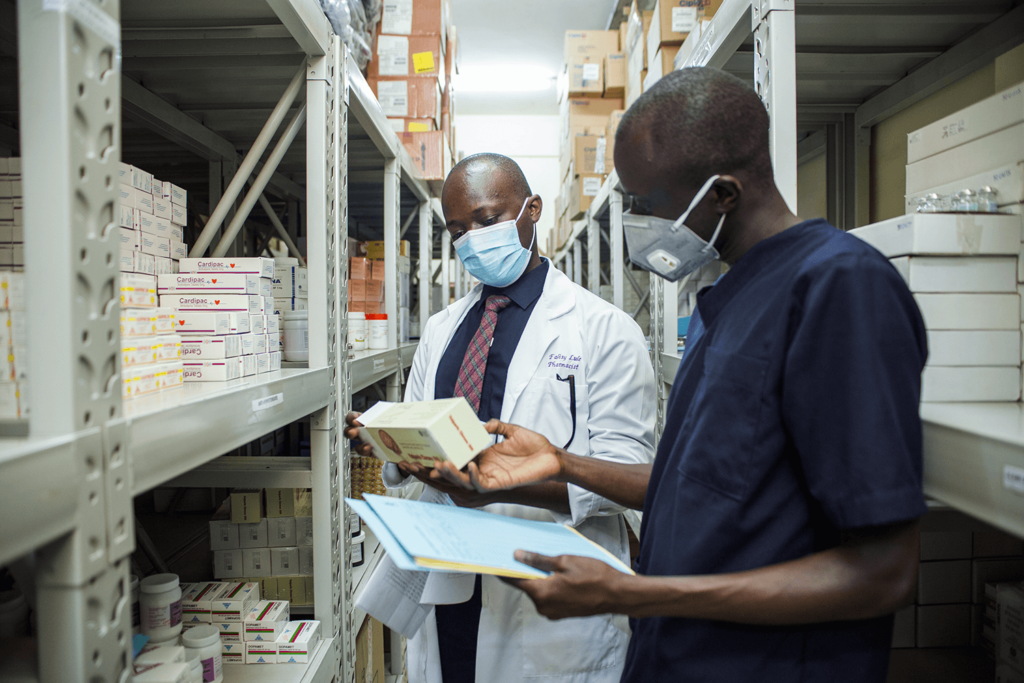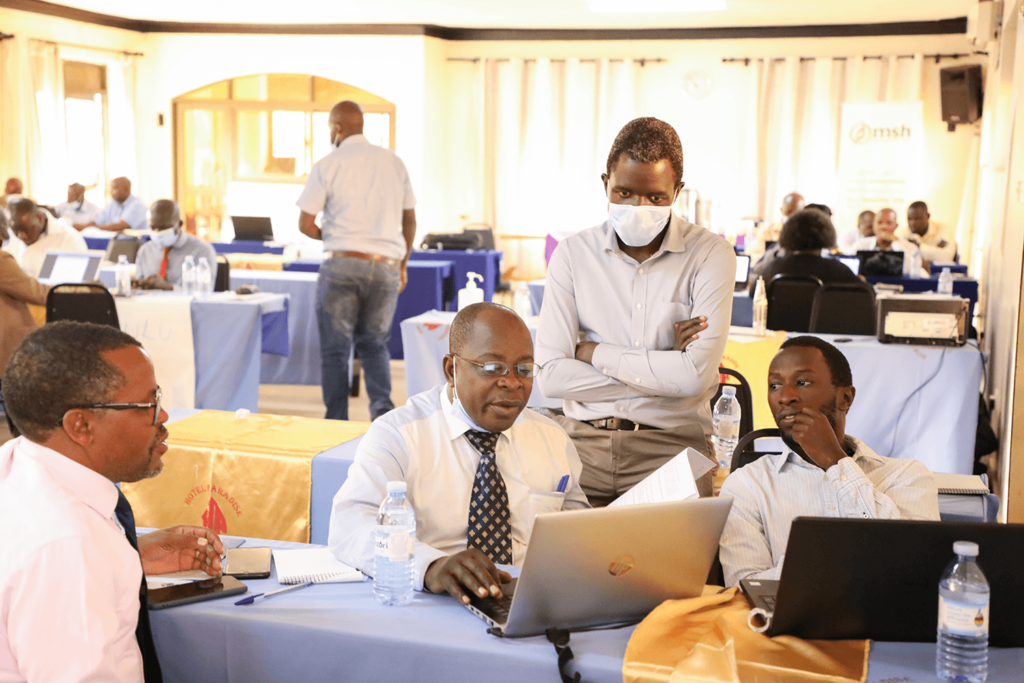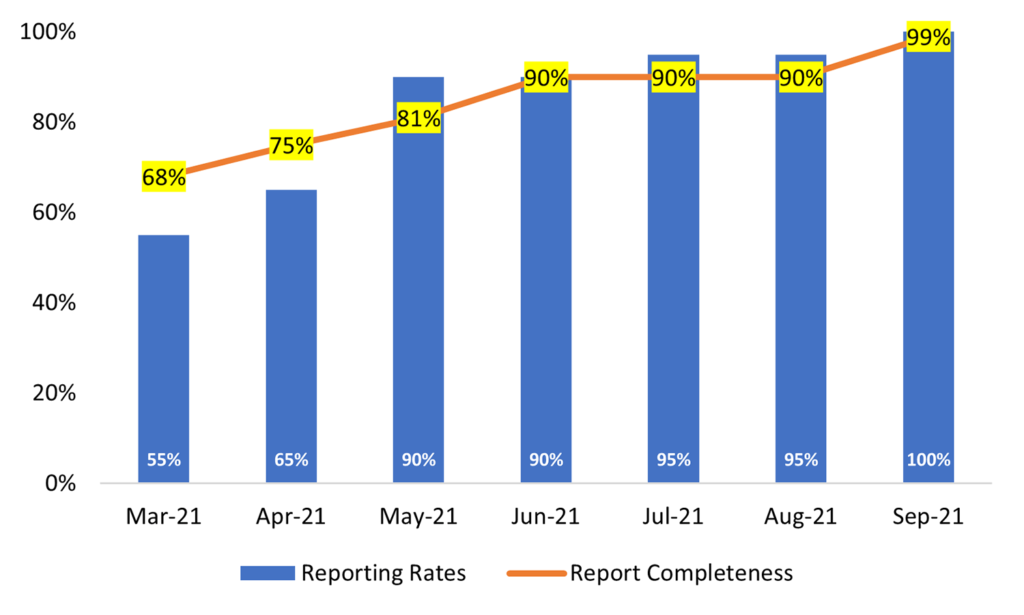Active Leadership Involvement Drives up Health Facility Stock Status Reporting and Visibility
Active Leadership Involvement Drives up Health Facility Stock Status Reporting and Visibility

Having visibility of stock status from health facilities is key to ensuring the availability of good quality essential medicines and supplies. Uganda’s Ministry of Health relies on this data to plan, procure, and distribute lifesaving commodities. Using data on the medicines that clients consume is the most accurate method to determine future health facility commodity needs. However, reporting on consumption data remains low. As a result, the Ministry of Health uses proxy data such as number of patients and new disease cases to calculate commodity needs. But because this data is not as accurate, using it for decision-making increases the risk of stockouts, overstocks, and expires.
Health facilities use the health management information system (HMIS) 105 section 6 tool in DHIS2 to routinely report stock status and quantities of commodities dispensed to clients and what has expired. In March 2021, only 47% of 4,520 health facilities reported HMIS 105 section 6 data in the District Health Information Software 2 (DHIS2). The situation was no better for referral hospitals that should demonstrate better performance because they have more highly trained staff and provide specialized health care services. Out of 20 referral hospitals, only 11 routinely submitted stock status data in DHIS2.
In March 2021, the Ministry of Health’s Department of Pharmaceuticals and Natural Medicines in partnership with the USAID-funded Uganda Strengthening Supply Chain Systems Activity (USAID/SSCS) and implementing partners engaged referral hospital leaders to improve reporting rates. The SSCS Activity leadership team and partners made monitoring visits to all referral hospitals to build the capacity of the hospital directors, principal administrators, pharmacists, and records staff in supply chain leadership and governance. They drew up action plans on hospital performance in monthly stock status reporting.

A follow-on meeting in May 2021 brought together leadership teams of all the referral hospitals to review supply chain performance and stock status reporting and to share lessons learned and best practices. By working with this range of personnel, referral hospital reporting rates improved from 55% in March 2021 to 95% in August 2021. Report completeness also improved from 68% in March 2021 to 90% in August 2021.
HMIS Section 6 Reporting and Completeness Rates in Referral Hospitals
